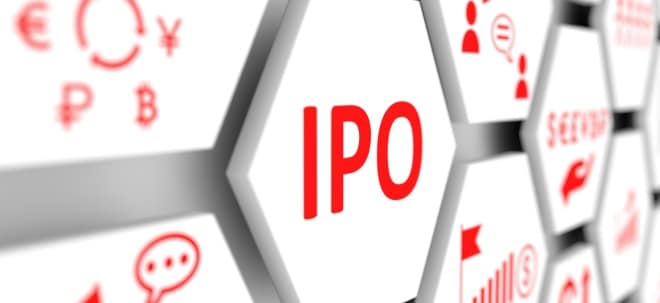Procter & Gamble Vs Unilever: Who Holds the Power in the FMCG Race?
Werte in diesem Artikel
In the global consumer goods arena, few rivalries are as iconic or as consequential as the one between The Procter & Gamble Company PG and Unilever PLC UL. As two of the world’s most influential players in the fast-moving consumer goods (“FMCG”) sector, PG and UL have built sprawling empires around everyday essentials, from soaps and shampoos to detergents and deodorants.Procter & Gamble, the American giant, is known for its brand-heavy strategy, emphasizing high-margin household and personal care products like Tide, Pampers and Gillette. With a sharp focus on North America and premium brand leadership, P&G commands strong pricing power and unmatched dominance in several key categories.Unilever, headquartered in London and Rotterdam, takes a more globalized and diversified approach. With powerhouse brands like Dove, Knorr and Hellmann’s, UL spans both personal care and food — an edge that gives it broader market coverage, especially in emerging economies. While PG leads with precision and scale, Unilever counters with reach, versatility and deep cultural integration.As these two FMCG powerhouses continue to jostle for consumer loyalty and market dominance, the question remains: Who truly holds the upper hand in this high-stakes global showdown? This face-off delves into their business models, financial performances and strategic priorities to uncover what sets these consumer goods titans apart and where their paths converge. Let us take a closer look.The Case for PGProcter & Gamble stands as a pillar of stability and resilience in the global consumer goods sector. With a presence in more than 180 countries and a portfolio of universally recognized brands like Tide, Pampers, Gillette and Olay, PG has embedded itself into the daily routines of billions. This vast scale, combined with deep distribution networks and decades of brand equity, creates a powerful competitive moat. It allows the company not only to maintain leadership across multiple categories but also to adapt swiftly to changing regional dynamics and consumer behavior.What sets P&G apart is its unrelenting focus on brand superiority and innovation. The company continues to invest heavily in differentiated products across all price tiers, ensuring it meets consumer needs regardless of economic climate. Whether through the eco-conscious Tide EVO, breakthrough whitening with Crest 3D White, or the latest in Oral-B electric toothbrush technology, PG drives category growth without relying on heavy discounting. Backed by strong media support and a disciplined go-to-market strategy, these innovations not only deepen consumer loyalty but also elevate the entire product category.While navigating an environment marked by inflation, evolving retail trends, and geopolitical uncertainty, P&G’s long-term playbook remains consistent: invest in superior products, build strong brands and operate with efficiency. Its measured response to macroeconomic pressures — balancing cost management with continued brand investment — reflects a business designed for both endurance and agility.The company has also acknowledged potential tariff headwinds, projecting related costs to reach $1-$1.5 billion annually. However, PG is proactively managing the tariff impacts through supply-chain localization, strategic sourcing and selective price adjustments. This disciplined response reflects a business designed for both endurance and agility. For investors seeking reliable performance and long-term value creation, Procter & Gamble offers a compelling blend of defensive strength and forward-looking strategy.The Case for ULUnilever stands as a global consumer goods titan, leveraging a diversified portfolio and a deeply entrenched international footprint to remain a formidable force in the industry. With operations spanning more than 190 countries, and a focus on both developed and emerging markets, Unilever commands a significant share of the consumer goods sector — particularly in beauty, personal care, food and home hygiene.UL’s “Power Brands,” including Dove, Vaseline, Magnum and Knorr, account for more than 75% of its turnover and continue to fuel growth across regions and segments. These brands have proven resilient, especially in developed markets like North America and Europe, where Unilever’s transformation efforts have yielded strong volume-driven growth despite macroeconomic headwinds.What sets Unilever apart is its relentless pursuit of premiumization and demand creation at scale. Under new CEO Fernando Fernandez, the company has adopted a sharper, consumer-obsessed strategy that prioritizes brand desirability, digital-first marketing and executional excellence. Innovations such as Dove’s Whole Body Deodorants, Persil’s Wonder Wash and Liquid I.V.’s wellness hydration products are prime examples of how the company is aligning its portfolio with evolving consumer preferences.The restructuring of sales forces, enhanced digital selling platforms and direct-to-consumer capabilities further position Unilever to capture demand in high-growth segments and geographies, particularly in emerging markets like India, Indonesia, and China, wherein turnaround plans are now gaining traction.Despite a complex and uncertain macroeconomic environment, Unilever’s financial posture remains solid and forward-looking. The company delivered underlying sales growth of 3% in first-quarter fiscal 2025, with strong volume contributions in core categories, such as personal care and wellbeing. Although FX volatility and tariff impacts loom, Unilever’s localized supply chains and strategic capital allocation provide flexibility and resilience. The planned demerger of its Ice Cream business into the standalone “Magnum Ice Cream Company” signals a clear commitment to portfolio focus and value creation.With a multi-year innovation pipeline, disciplined cost productivity, and a reinvigorated leadership team, Unilever is shaping itself into a faster, leaner and more competitive growth engine, which is well worth watching as a long-term investment play.How Do Estimates Compare for PG & UL?The Zacks Consensus Estimate for Procter & Gamble’s fiscal 2025 sales and EPS implies year-over-year growth of 0.2% and 3%, respectively. EPS estimates have moved down by a penny in the past 30 days. PG’s annual sales and earnings are slated to increase 2.6% and 3.2% year over year, respectively, in fiscal 2026. Image Source: Zacks Investment Research The Zacks Consensus Estimate for Unilever’s fiscal 2025 sales and EPS suggests year-over-year growth of 4.4% and 2.5%, respectively. EPS estimates have moved down by a penny in the past 30 days. UL’s annual sales and earnings are slated to increase 3.2% and 6.1% year over year, respectively, in fiscal 2026. Image Source: Zacks Investment Research Both Procter & Gamble and Unilever have experienced downward estimate revisions in the past 30 days, reflecting broader market caution. However, UL holds a slight edge, supported by stronger projected year-over-year revenue growth, while expected EPS growth for both companies remains largely on par.Price Performance & Valuation of Procter & Gamble & UnileverIn the past year, the UL stock had the edge in terms of performance, having recorded a total return of 19.1%. This has noticeably outpaced the benchmark S&P 500’s return of 10.1% and PG’s 3.8% growth.One-Year Price Performance Image Source: Zacks Investment Research From a valuation perspective, Procter & Gamble trades at a forward price-to-earnings (P/E) multiple of 24.06X, which is above its 5-year median of 23.66X. Moreover, the PG stock trades above Unilever’s forward 12-month P/E multiple of 18.85X and a 5-year median of 18.2X. Image Source: Zacks Investment Research At current levels, UL appears undervalued relative to Procter & Gamble, presenting a compelling long-term opportunity. While its lower valuation reflects past execution concerns and emerging market exposure, PG shows clear signs of improvement under new leadership, with a sharper portfolio focus, stronger brand investment and renewed operational discipline.In contrast, while PG's premium valuation reflects its reputation for consistency and premium brand pricing power, it leaves less room for upside surprises. Investors paying a higher multiple for PG are essentially buying into its defensive qualities and predictability, whereas Unilever, with its discounted valuation, offers a more balanced mix of resilience and turnaround potential.ConclusionIn this PG-UL face-off, Unilever emerges as the stronger contender, driven by its impressive recent stock performance that outpaces Procter & Gamble and the broader market. Unilever’s more attractive valuation compared with PG highlights its appeal as a value investment, supported by its diversified global presence and focused growth strategy. UL’s emphasis on premiumization and expanding in emerging markets strengthens its outlook and positions it well for future success.Investor sentiment around Unilever is also reflected in recent positive revisions to its earnings estimates, signaling confidence in the company’s potential to deliver strong financial results. While Procter & Gamble remains a solid and stable player with a well-established brand portfolio, Unilever’s combination of appealing valuation, robust growth prospects and improving earnings outlook ultimately gives it the edge in this global consumer goods rivalry. For investors seeking growth with value, Unilever stands out as the preferred choice. Unilever currently carries a Zacks Rank #3 (Hold), while PG has a Zacks Rank #4 (Sell).You can see the complete list of today’s Zacks #1 Rank (Strong Buy) stocks here.Only $1 to See All Zacks' Buys and SellsWe're not kidding.Several years ago, we shocked our members by offering them 30-day access to all our picks for the total sum of only $1. No obligation to spend another cent.Thousands have taken advantage of this opportunity. Thousands did not - they thought there must be a catch. Yes, we do have a reason. We want you to get acquainted with our portfolio services like Surprise Trader, Stocks Under $10, Technology Innovators,and more, that closed 256 positions with double- and triple-digit gains in 2024 alone.See Stocks Now >>Want the latest recommendations from Zacks Investment Research? Today, you can download 7 Best Stocks for the Next 30 Days. Click to get this free report Unilever PLC (UL): Free Stock Analysis Report Procter & Gamble Company (The) (PG): Free Stock Analysis ReportThis article originally published on Zacks Investment Research (zacks.com).Zacks Investment ResearchWeiter zum vollständigen Artikel bei Zacks
Ausgewählte Hebelprodukte auf Unilever
Mit Knock-outs können spekulative Anleger überproportional an Kursbewegungen partizipieren. Wählen Sie einfach den gewünschten Hebel und wir zeigen Ihnen passende Open-End Produkte auf Unilever
Der Hebel muss zwischen 2 und 20 liegen
| Name | Hebel | KO | Emittent |
|---|
| Name | Hebel | KO | Emittent |
|---|
Quelle: Zacks
Nachrichten zu Unilever plc
Analysen zu Unilever plc
| Datum | Rating | Analyst | |
|---|---|---|---|
| 03.07.2025 | Unilever Underperform | Jefferies & Company Inc. | |
| 02.07.2025 | Unilever Outperform | Bernstein Research | |
| 26.06.2025 | Unilever Buy | Deutsche Bank AG | |
| 25.06.2025 | Unilever Overweight | JP Morgan Chase & Co. | |
| 25.06.2025 | Unilever Sell | UBS AG |
| Datum | Rating | Analyst | |
|---|---|---|---|
| 02.07.2025 | Unilever Outperform | Bernstein Research | |
| 26.06.2025 | Unilever Buy | Deutsche Bank AG | |
| 25.06.2025 | Unilever Overweight | JP Morgan Chase & Co. | |
| 16.06.2025 | Unilever Overweight | JP Morgan Chase & Co. | |
| 11.06.2025 | Unilever Outperform | Bernstein Research |
| Datum | Rating | Analyst | |
|---|---|---|---|
| 25.04.2025 | Unilever Neutral | Goldman Sachs Group Inc. | |
| 13.02.2025 | Unilever Neutral | Goldman Sachs Group Inc. | |
| 30.12.2024 | Unilever Market-Perform | Bernstein Research | |
| 27.12.2024 | Unilever Market-Perform | Bernstein Research | |
| 25.11.2024 | Unilever Market-Perform | Bernstein Research |
| Datum | Rating | Analyst | |
|---|---|---|---|
| 03.07.2025 | Unilever Underperform | Jefferies & Company Inc. | |
| 25.06.2025 | Unilever Sell | UBS AG | |
| 13.06.2025 | Unilever Sell | UBS AG | |
| 28.04.2025 | Unilever Underperform | Jefferies & Company Inc. | |
| 25.04.2025 | Unilever Sell | UBS AG |
Um die Übersicht zu verbessern, haben Sie die Möglichkeit, die Analysen für Unilever plc nach folgenden Kriterien zu filtern.
Alle: Alle Empfehlungen

